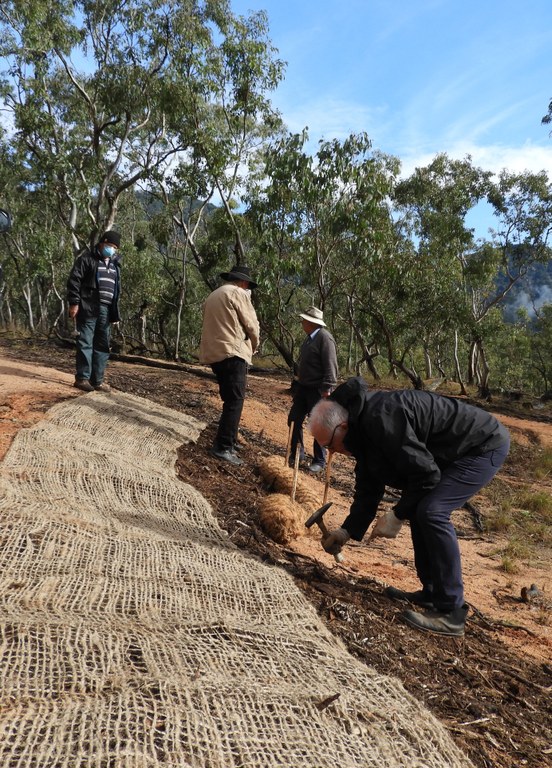
Down and Dirty in Araluen: Saturday's Practical Erosion Workshop
The USLC Soil Erosion Workshop - the second in a series of workshops for the Araluen Creek Restoration Project - was held on 28 May 2022. Around 15 people gathered on the day to hear Andy Taylor from Local Land Services share practical advice on controlling small-scale erosion with simple techniques. The group ‘walked the talk’ and installed some basic structures on a patch of seriously degraded land that was previously mined for gold. The ingredients for the day included coir logs, jute mesh, mulch, local rocks and branches, mixed with some elbow grease and Andy’s extensive experience to fit them together to make water work for you.
Saturday's workshop took place at Wisbey’s Orchard owned by Robyn Clubb, the Treasurer of the Upper Deua Landcare Catchment Group. The area the erosion remediation efforts took place was formerly a site for gold dredging or hydraulic mining. What was left was almost completely denuded, with no vegetation or topsoil remaining. Mining finished around the 1930s and no remediation was ever attempted. Now, decades later, there is still a deficit of topsoil, but the site is slowly regenerating with some native trees and grasses. However, points of active erosion remain and Andy explained it is better to get onto them sooner than later, to prevent them becoming bigger, more costly issues down the track. That was the aim of the day - doing things that can be done by hand, to prevent having to do them by machine.
A key element of the Araluen Creek Restoration Project is landholder and community engagement to expand our understanding of waterway remediation, with the overall aim of building resilience back into our landscape. The Project’s main activity involves some large scale erosion control measures - heavy machinery, big logs and tonnes of rock - to stabilise the Araluen Creek and its tributaries. However, as Andy pointed out at the workshop, while the scale of control techniques may vary, the process of soil erosion is largely the same. To demonstrate this principle, Andy used an example of a trickle of water along a vehicle track on the walk to site. As the water hit the divot, it gained energy on the decent and picked up enough momentum to start moving loose particles.
“Water always wins” said Andy, many times! However, his tip was to think like water - think where it will flow, what will make it divert to places where you want it to go, ways to slow it down or spread it out - without creating new erosion problems. You should also look more broadly at the site, as the answer to localized erosion may have simple up-slope solutions. His other top tip for livestock producers is “the best measure to address most soil erosion is fencing. Almost 90% of soil erosion can be fixed by keeping livestock out of areas with erosion issues, and giving plants a chance to do their bit.”




